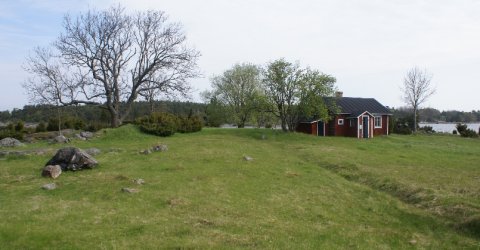
Identification of ten ‘hot-spots’ for cultural heritage in existing and proposed Ramsar Sites in Finland
The newly published report on The cultural heritage of Ramsar wetlands in Finland, prepared by Parks and Wildlife Finland (Metsähallitus), assesses the most significant cultural values of existing and proposed Ramsar Sites and identifies ten ‘hot-spots’ for wetland cultural heritage.
In assessing the cultural values of Finnish wetlands, the study looked at local history, cultural landscapes, historical buildings, archaeology and analysed topographical and historical maps. Sources included the Ramsar Information Sheets and on-line resources for archaeological sites and historically valuable buildings in Finland.
Although the study was constrained by the short timeline available, it was possible to identify ten ‘hot spots’ on the basis of the significance and representativeness of their cultural values. One key challenge in the identification of these ‘hot spots’ was the comparison of wetland sites with very different types of cultural values.
The study also sets out guidelines for a future survey of cultural heritage of existing and proposed Ramsar Sites in Finland.
Ten ‘hot-spots’ for wetland cultural heritage in Finland
- Bird Wetlands of Hanko and Tammisaari. A maritime cultural landscape with a high diversity of archaeological sites and building heritage.
- Lake Kutajärvi Area. A representative agrarian landscape.
- Valkmusa National Park. A wetland with exceptional preconditions for submerged Stone Age remains.
- Quark Archipelago. A representative maritime cultural landscape with a strong human impact.
- Kauhaneva - Pohjankangas National Park. A sparsely settled area with a well preserved medieval road.
- Salamajärvi National Park. A forested area where the remains of tar burning and hay-making on meadows are well preserved.
- Patvinsuo National Park. A multifaceted cultural heritage that reflect the traditional sources of livelihood in a forested area.
- Krunnit Islands. An outer archipelago community of pilots.
- Oulanka National Park. The characteristic cultural landscape of the area consists of flood-meadows that once were used for haymaking. Traces of many traditional activities exist.
- Lemmenjoki National Park. A traditional Sami cultural landscape with human impact from the prehistory to present reindeer round-up sites.
This project was made possible thanks to the generous support and participation of the MAVA Foundation and Parks and Wildlife Finland (Metsähallitus), in the context of the Ramsar Convention Secretariat project “Conservation of the natural and cultural heritage in wetlands: Global leadership for an integrated approach through the Ramsar Convention”(March 2015-March 2018), and in line with Decision SC53-15 of the Ramsar Standing Committee.